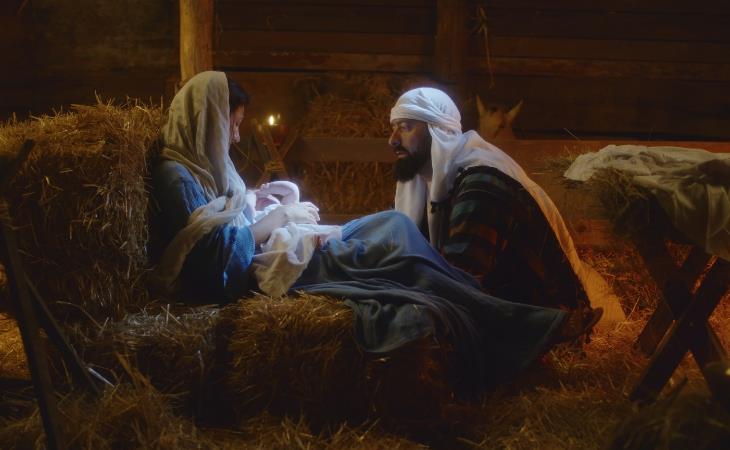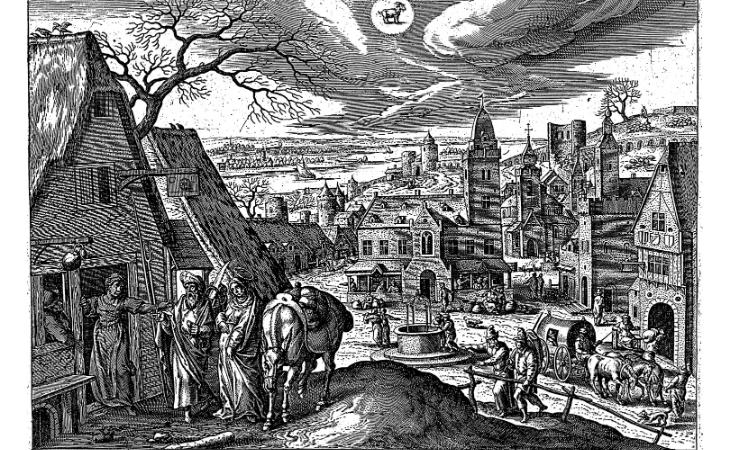"Jingle bells, jingle bells, jingle all the way" is a tune synonymous with Christmas joy, but its origins may surprise you. Contrary to its festive reputation, "Jingle Bells" was originally composed as a Thanksgiving song. Hard to believe, right? James Lord Pierpont composed the melody, originally titled "One Horse Open Sleigh," in the 1850s, capturing the spirited sleigh races that were an annual Thanksgiving tradition in Medford, Massachusetts.
2. Jesus was born on December 25
Despite the widespread acceptance of December 25 as Jesus' birthdate, biblical scriptures offer no conclusive evidence regarding the specific month or day. The Bible mentions shepherds in the fields during his birth, but Bethlehem's frigid December weather contradicts this fact. Shepherds tended to shelter their sheep indoors during the season. Furthermore, the biblical reference to Mary and Joseph's census travel contradicts historical data, as censuses in Jesus' time normally took place in September or October, coinciding with the post-harvest period and preceding the beginning of harsh winter conditions.
Also, the earliest Christians observed Easter, but it was not until the fourth century that Jesus' birth was acknowledged as a significant day. This decision by the church aimed to provide an alternative celebration, diverting attention from the pagan winter solstice festivities. It was therefore decided to establish December 25 as the day of commemoration of Jesus' birth, which has since become a significant celebration for Christians. Notably, scholars widely agree that Jesus was probably born near the end of September, drawing upon various supplementary Biblical cues.
3. Christmas trees have always been part of Christmas
Decking the halls with a Christmas tree is one of the most cherished traditions, especially in the United States. While many assume it's an age-old practice, the reality is quite different. The Christmas tree was introduced to America by German immigrants in the mid-18th century. However, even after a century, the tradition faced challenges and controversy. The New York Times expressed disapproval of the custom in an editorial during the 1880s, and Teddy Roosevelt, during his early 1900s presidency, strongly criticized the cutting down of trees for Christmas, deeming it a wasteful use of quality timber. Nonetheless, the tradition caught on and flourished.
4. Writing ‘Xmas’ is a modern thing
Xmas, the abbreviated version of Christmas, often evokes mixed sentiments during the holiday season. While some see it as a festive faux pas since it is too modern and irreligious, the historical truth is that Xmas has been used as a respectful shorthand for Christmas for generations. Though academics differ on when it first appeared, it is widely assumed to have appeared between the 1200s and 1500s. The 'X' in Xmas comes from the Greek translation of the first letter of 'Christ,' a symbolic representation that has stood the test of time.
5. Father Christmas wears red because of Coca-Cola
You've probably heard about this urban legend before. Yes, Father Christmas wears a red suit, which also happens to be Coca-Cola's signature color. Santa has also appeared in Coca-Cola advertisements for many years. However, it is important to dispel the myth that Coca-Cola is responsible for Santa's red suit. While Coca-Cola began promoting a red-clad Santa in the early 1930s, this depiction dates back to the nineteenth century.
Thomas Nast, an American cartoonist of German ancestry, played a vital role in establishing our modern view of Santa Claus during the 1870s. Nast's pictures popularized the image of Santa that we now associate with him: a red coat, a red cap decorated with white fur, and a distinctive black belt with a buckle around his waist. By the 1930s, when Coca-Cola integrated Santa into their advertising, Nast's original cartoons had firmly implanted this cheery portrayal in the collective consciousness.
6. An innkeeper turned Joseph and Mary away
The Bible does not make any reference to the innkeeper who, according to popular belief, turned Joseph and Mary away—a character introduced into the Nativity story through later interpretations. Some scholars argue that the Greek term 'kataluma,' often translated as 'inn,' might be more accurately understood as 'guestroom.' This subtle interpretation implies that Joseph and Mary could have been on their way to visit family in Bethlehem. When they arrived at their destination, they might have learned that the guestroom in a relative's home was already occupied. This raises questions regarding the purpose of the inn, suggesting the idea that it was added later.
7. The “12 days of Christmas” begin on Christmas
While listening to "The 12 Days of Christmas," you may find yourself wondering about the significance of the term "first" day of Christmas. Isn’t Christmas just one day? Unlike the modern concept of Christmas as a single day, historical customs followed a specific pattern. Beginning four Sundays before Christmas, the church observed Advent, a period of spiritual preparation and fasting. Christmas Day then served as the entrance to jubilant celebrations, signaling the end of a mournful time and the start of festivities.
The "12 days" refer to the period between Christmas and the day before Epiphany, which concludes on January 6. In various European cultures, these twelve days were celebrated with festivities and revelry similar to those associated with Mardi Gras.







